Grapes Laura (Flora) - one of the most beloved varieties of cutlery at gardeners. Massive clusters with large berries, high yields, early ripening and unassuming conditions for growing varieties attract the attention of many winegartes who bred it in their sites. Laura grape variety is a successful achievement of Odessa collectors. This hybrid was derived by complex work of crossing several varieties. It has a number of benefits that make it in demand during cultivation in any climatic zones. About what distinguishing features variety has and how to grow luxurious grapes on its plot, read further.
Laura grapes: Description
Laura's table grapes has an attractive appearance. Huge bunches of conical shape, at the time of ripening can reach up to 1 kg in mass. The average threshing length is 40 cm. Direct influence on the density indicator and the mass of Breaka has compliance with inflorescences. As a rule, in one bush ripen in the same form, slightly different in size and mass. Vinograda Laura maturing time is early. The first harvest can be removed from the bush 110-120 days after the formation of the wound.
The shoots of grapes are characterized by a high growth rate. The yield of the bush is very high. Adult grape bush gives up to 40 kg of harvest per season. Grape casting dark green, have a five-spot shape with dissected ends. Laura - frost-resistant grade, can withstand frosts up to 23 degrees, practically not subject to fungal diseases.
Characteristics of Laura grapes
The white fruits of the Laura variety have an attractive commodity and possess excellent taste:
- Berries are large, elastic, with fine crispy skin, proper oval or cylindrical shape, up to 3 cm long. Weight of one berry - from 6 to 12 grams. Fruit color - slightly salad shade with white wax. That side of the fetus, which addressed to the Sun, has a darker amber shade.
- The maximum maturity of the berries firmly hold onto the fruit and do not fall out of the bunch for a long time, which significantly expands the harvest time. Increased humidity of the soil does not affect the appearance of the fetus - it does not crack and does not become watery. Mature borders of Laura excellent transportation.
- The flesh is dense, very juicy, has a sour-sweet taste. The fetal sweetness indicator depends on the humidity of the soil and air. With excessive moisture and when ripening in cold weather, the berries acquire acid.
- Pleasant rich taste and fragrance of Laura berries has a nutmeg taste. This table variety is not only eateled in fresh form, but also use it in winemaking. Inside the pulp are 2-3 large bones, which are easily separated from it.
FEATURES OF GROWTH VINZ VINZ Laura
Laura grape vines is flexible and power, grows pretty quickly. Young shoots develop quickly, most of them are suitable for fruiting. The trunk of a hybrid variety has a peeling chopping bark, young shoots are painted into a light brown tint. On the shoots dense are large dark green casting.
Flowers of female type require manual pollination, which allows you to get a high variety yield. Maximum marking on an adult bush - 50 clouds. In order not to overload the bush, experienced gardeners track the number of obscenities, removing extra to get the most coarse clusses. Thanks to the correct trimming, you can get the maximum yield from the bush.
Laura grape landing
For high yields and rapid growth of the grape bush, when it is landing, it is necessary to comply with certain requirements:
- Choose that garden plot that is maximally protected from draft. For the landing of the Laura variety in the northern regions, it is recommended to use a site along the wall of the building, a household building, fencing.
- The place allotted for the vineyard should be well lit.
- The plot must be on the hill. Groundwater is dangerous for the root system of grapes, so the shrub must ensure good drainage.
- For landing, the clay soil does not fit, with an increased salt content.
- The Laura hybrid is an unpretentious, frost-resistant variety, which is successfully grown not only in the southern and central regions, but also in the northern part of the country. To grow Laura's grapes in Siberia, it is necessary to ensure sufficient lighting of the shrub during the day. If the sunny days are not enough, the borders may not mature. Therefore, the optimal choice for landing is a well-lit plot in the garden.
Laura grapes landing
The optimal lifetime of the hybrid in the southern regions is the period from October to March. In the northern part of the country, the seedlings plant in the spring when the air temperature reaches 15 degrees, and the soil warms up to 10 degrees.
Laura grape seeds landing scheme
- The depth of the landing pit should be 2 times the size of the seedling root system. When planting multiple bushes, a distance of at least 1-1.5 meters should be observed. If the seedling is located along the fence or wall, it is necessary to retreat 0.5 meters from it.
- 2-3 weeks before landing a seedling, the pit needs to be filled with fertilizers. Mineral fertilizers are made in the well mixed with the soil. For 2-3 weeks, the pit should be moistened to fertilize to the soil.
- So that young shoots do not harm on the ground, a support column or talers are driven into the pit.
- After 2-3 weeks, the grape seedling is ready for landing in the well. The pit must be carefully filled with soil and good to rav. The rolling circle is recommended to inspire that the soil keeps moisture longer.
Laura grape variety: Care
Despite the unpretentiousness of this variety, the grapes need to be compliance with certain rules of care, which are in the timely trimming of the vineyard, watering and feeding.
Watering Laura grapes
Immediately after planting young bustle, it is necessary to observe regular watering plants. Young grape seedlings need optimal soil moisture for the proper development of the root system and rapid rooting. For the convenience of watering, it is necessary to make a circular groove around each seedling, in which water will be poured. The amount of water for the southern region is from 10 to 30 liters of water for each bush daily. Adult shrubs require more moisture, as the soil drying. Especially grapes need watering during fruiting. So that the moisture under the bush is preserved as long as possible, the rolling circle must be mounted with a layer of sawdust, peat, sponded compost. Mulching of the soil is carried out in spring or autumn. In addition to saving moisture, the mulch layer prevents the growth of weed grass around the vineyard.
Undercotting grapes Laura.
For a good harvest, the grapes of Laura must take care of a shrub feeding. The variety speaks well to enter universal mineral fertilizers in the soil with complex content of potassium, phosphorus, calcium, nitrogen. The feeders are carried out regularly, in small quantities. According to experienced grapes, universal fertilizer for grapes is manure.
Pruning grapes Laura.
In the first 2 years after landing in trimming the bush, there is no need. Laura grape trim is held for the 3rd year after landing. When the bush begins to be fruit, the formation of Laura grapes spend each autumn, removing unnecessary and weak shoots. As a rule, they leave 3-4 major escapes that will gain strength. Crapping the vine, it is necessary to monitor the number of eyes on the shoot, the optimal number of 40-50 pcs.
If the young vine does not cut in the fall, in the winter it will freeze. Too severe trimming of the bush is poorly reflected in the yield next season.
Winter shelter grapes Laura
In the southern regions with warm winter, where the mark of the thermometer's column does not fall below 15 degrees, Laura grapes do not need winter shelter. In the rest of the regions, grapes are thoroughly covered, despite its frost resistance. In the fall, before the shelter of the bush, trimming it, removing damaged branches. The shoots are flexible to the ground, fix and sprinkle a layer of mulch, hay, sawdust and any observer material. In order to avoid the freezing of the grape vines, it is pre-treated with a lime solution.
The reproduction of Laura grapes
Laura grapes multiply by seedlings or vaccine of cuttings to an adult plant:
- In reproduction, the seedlings allocate a young escape, deepening into the soil by 20 cm. Then the bush is cut and transplanted to a new place.
- The vaccine of the cutter is carried out on an adult bush of any variety of grapes. To do this, they cut off the young vine and put it for 1 hour in the container with warm water. Then the cut is treated with "humate". The escape is placed in a slice on the strain.
Diseases and pests grapes Laura
Laura's grade is resistant to fungal diseases, but a special danger to it represents Oidium. This is a fungal disease that affects the vine and the leaves of the plant, not allowing them to fully develop. To protect against fungus, spraying bushes with preparations containing sulfur or a solution of manganese. For prophylaxis from Oidium, borobo liquid and copper sipop are used.
The sweetness of the fruit of Laura manits to itself. Protect borders from insect attacks help fine-heeled grids that are covered by berries.
Laura grapes: reviews
According to the reviews of experienced gardeners, Laura grape variety is one of the most harvest and delicious vintage varieties.
- Laura is an ideal variety for transportation, fruits have an attractive appearance, so it is often grown for sale. Crop stability and simple vineyard care, make a variety ideal for homemade cultivation.
- Stability of a variety to adverse weather conditions and frost allows you to grow vineyards in the northern regions, provided that it is properly landing and compulsory shelter for the winter.
- The pleasant taste of fragrant sour-sweet berries has long appreciated homemade winemakers. Grape table wine from the Laura variety has excellent taste.
- The disadvantages of the variety include its predisposition to the attack of the OS, which attracts the sweet taste of fruits. Special protective nets suitable on the borders can easily cope with this problem, not allowing the axes to damage the juicy berries of grapes.
Correct vineyard care and observance of all rules of agricultural culture culture, allows to get a rich harvest every year.

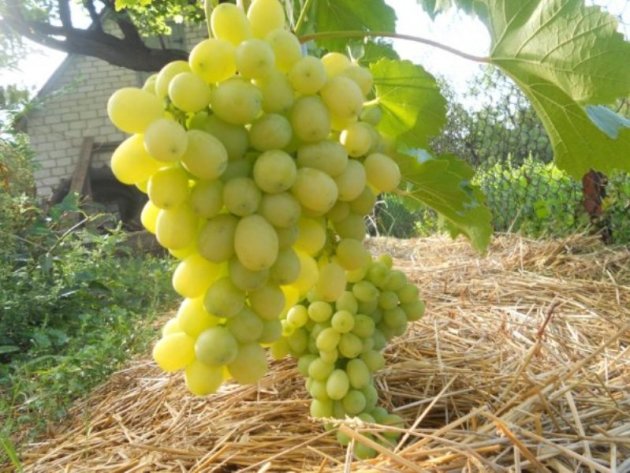
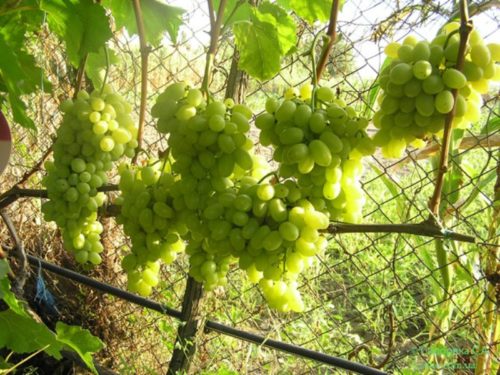
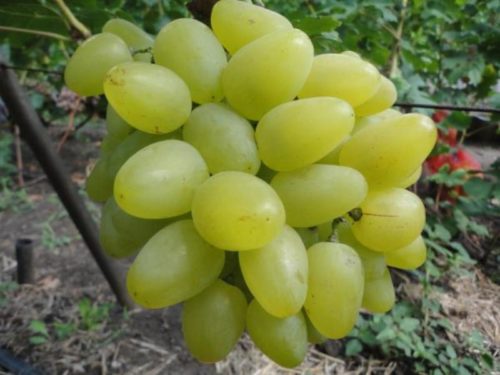
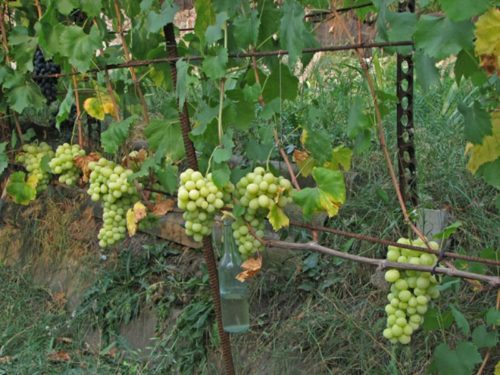

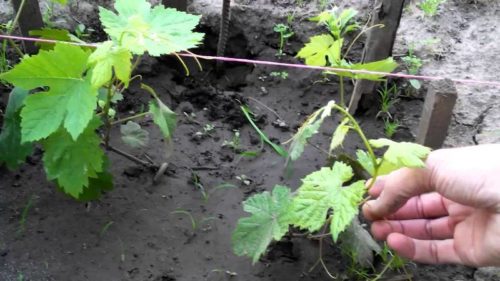
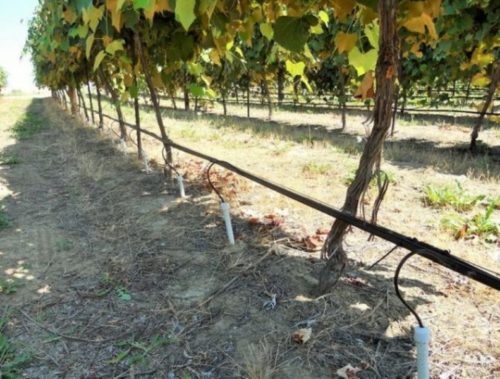


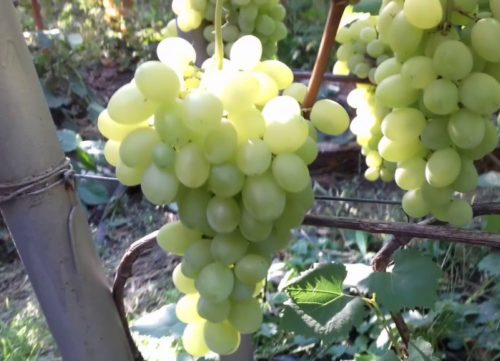
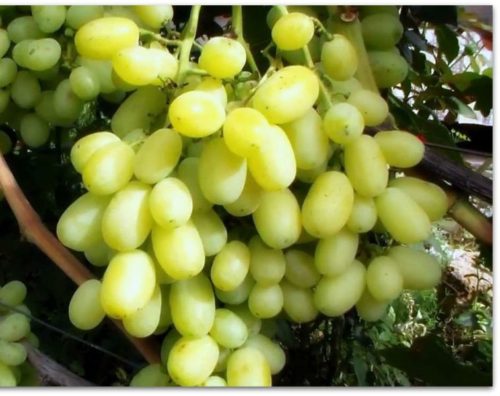
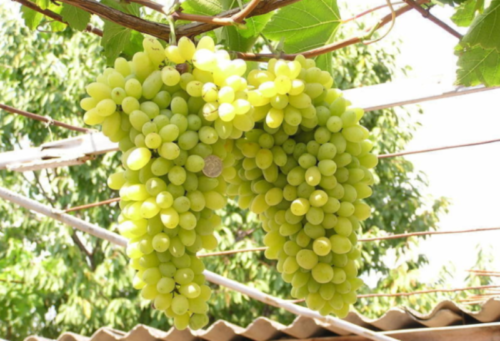
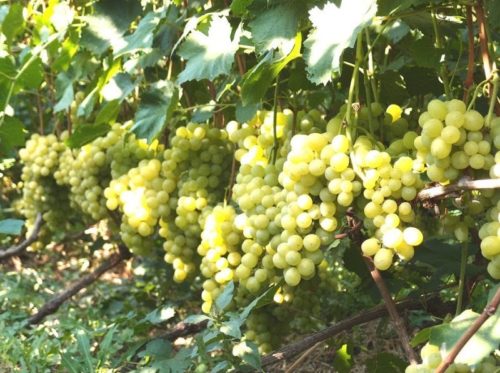
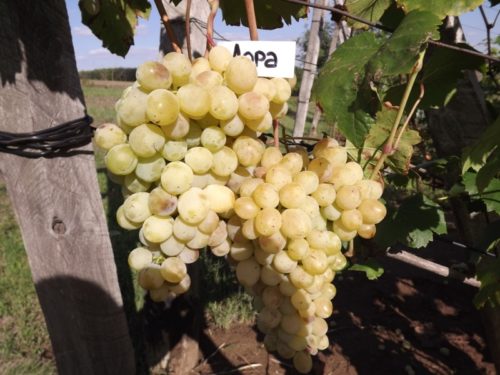
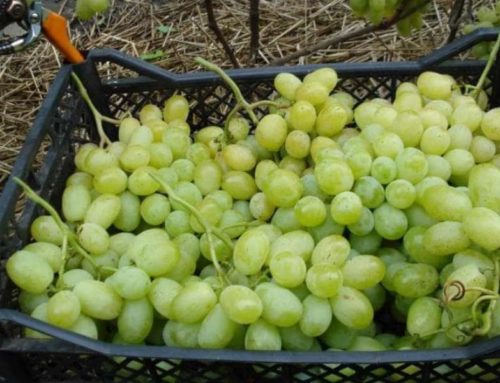












 Start a discussion ...
Start a discussion ...